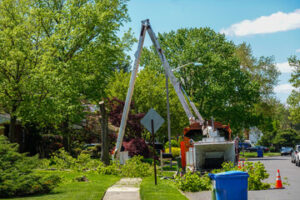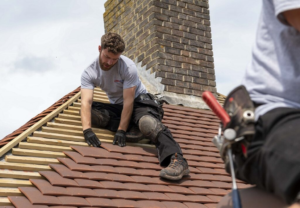Tree Work is a difficult, time-consuming job. It’s also expensive — especially when the wrong approach is taken.

When compared to other grounds maintenance workers, the fatality rate for those who specialize in trees is significantly higher. That’s because tree work is complicated, labor-intensive, and dangerous. Proper training and equipment are essential to safe and effective tree care.
If your tree is dead, dying or poses a safety threat due to damage or disease, it may need to be removed. Professionals can assess the tree and its surroundings and develop a removal plan that balances safety, health and aesthetics. This process requires specialized equipment and extensive experience, so it’s important to choose an experienced contractor. Ask for proof of insurance and check with local authorities to ensure that the work is done legally.
To remove a large or dangerous tree, professionals will use a crane. The operator will hoist the arborist up to the top of the tree, where they’ll cut a section and then lower it to the ground. The crew will repeat this process until the entire tree has been removed from the site. After the removal, professionals will grind or mulch the stump to remove any remaining evidence of the tree.
In cases where a tree cannot be safely removed in one piece, the service may opt to fell it. They’ll start by cutting a notch near the base of the tree to guide the fall in a safe direction. This step is meticulously calculated to avoid damaging surrounding property or utility lines.
Other removal options include removing individual limbs and branches. This can be done by climbing or using a bucket truck to reach the uppermost limbs of the tree. They’ll then cut the limbs and branches and secure them with ropes to prevent them from falling during the removal process.
Before starting the removal, professionals will set up a work area and prepare their equipment. They’ll also inform property owners about the schedule and any special precautions that need to be taken, like securing pets or moving cars. They’ll also wear personal protective equipment, such as helmets, gloves and eye protection. Lastly, they’ll clean up the site and cart away any debris. Choosing the right professional for your tree removal will make the process quicker and safer for everyone involved.
Tree Pruning
Trees add value to a property, provide ecosystem services like air filtration and shade, and improve the aesthetics of a landscape. In order to maintain these benefits, trees must be pruned regularly. Pruning is the act of removing dead or unhealthy material from a tree, as well as training the growth of young trees. Proper pruning can help promote plant health, prolong the life of the tree, and reduce risks to people and property.
While a few simple pruning techniques can be learned by the homeowner, many of these projects are best left to qualified arborists and tree care professionals. They have the equipment and training to properly perform these tasks and can ensure that your trees are healthy, safe, and attractive.
Most light, routine pruning to remove weak, diseased or dead limbs can be done at any time during the year. However, it is recommended that heavier pruning not be performed during winter, as this can interfere with a tree’s natural wound closure process. In addition, heavy pruning can encourage the spread of some diseases, such as oak wilt, through open pruning wounds.
There are several types of pruning that an arborist may perform on a tree, including structural (stabilization), size management and cosmetic (formative) cuts. Structural pruning focuses on reducing a tree’s overall height and width to promote plant health and reduce potential hazards from wind, snow, or ice. Size reduction pruning also includes removing water sprouts and thinning out interior limbs to increase light penetration.
Formative pruning helps shape a tree and encourages proper growth habit, promoting vigor and structure. This type of pruning is particularly important for younger trees to train them to grow in a desirable direction. Examples include removing low-hanging branches to allow pedestrians to walk under them or clear entryways, and removing dead or damaged limbs.
Most trimmed limbs will need to be sealed with a callus in order to prevent decay and other harmful pathogens from entering the wound. In order to achieve this, the first cut should be made on the underside of the branch, creating a shallow notch that extends slightly past the tree collar. A second cut should then be made on the top side of the limb, extending slightly past the underside cut and creating a short stub.
Tree Installation
Tree planting provides a great way to add beauty, value, and shade to your property. A properly planted tree can help to reduce air conditioning costs, control erosion and shelter buildings and cars from damaging winds. A well-maintained landscape also contributes to a healthier, more comfortable environment for people and animals. A tree service can provide the advice you need to ensure that your trees grow in the healthiest way possible.
The first step in tree work is to select the right type of plant for your site. This can be determined by taking into account the soil type and condition, the climate and local water resources, as well as your aesthetic preferences. Once you’ve selected the right plant, dig a saucer-shaped hole that’s at least twice as wide as the existing root ball of the tree. Then, gently tamp the soil to make sure that it is packed tightly but not compacted. Finally, water the soil to moisten it.
Once the soil is prepared, plant the new tree. It is important to make sure that the planting point is at or slightly above ground level, so the roots will be able to reach the available moisture. Also, be sure to place the new tree in the center of the planting area. After the planting, cover it with mulch or wood chips. This will help to retain soil moisture and prevent weeds from growing around the base of the plant.
It’s a good idea to use a mulch or wood chip that isn’t treated with herbicides, since chemicals can be harmful to trees. It’s also important to avoid putting fertilizers or other chemicals in the soil near the tree, as they can cause damage over time.
It’s not necessary to be home during the course of the tree work, but it is a good idea to share any concerns you may have with your tree service professionals. This will allow them to address your issues promptly and correctly, resulting in better quality tree work. You can track the progress of your tree service request through 311’s service lookup tool using the confirmation number provided to you.
Tree Maintenance
Trees require regular maintenance to keep them looking great, healthy and safe. This is true both on a macro level across the landscape and on a micro level in your own yard.
This maintenance includes pruning, thinning, and removing dead branches as well as fertilization and spraying for pests. It also entails keeping soil nutrient levels in balance and providing adequate space for root growth.
When it comes to the health and safety of your trees, you want to work with a professional. They have the training, equipment and expertise to perform these tasks safely and properly. A reputable tree service will have an ISA (International Society of Arboriculture) arborist on staff or be an affiliate of TCIA (Tree Care Industry Association). Both of these organizations require their members to meet specific requirements and undergo ongoing professional development to stay current with best practices.
In addition to trimming and pruning, tree maintenance can include root excavation to remove underground roots that are causing damage. It can also involve treating a tree for disease or insect infestation or even re-planting a damaged or dying tree.
The final step of tree maintenance involves cleanup, which may include raking, brush removal and grinding the stump left behind after a removed tree. This step is important because it helps to minimize the risk of damage to your property as a result of this work.
Proper tree maintenance is the only way to ensure a long life for your trees and a healthy, beautiful landscape. In fact, well-cared-for trees are a big selling point for homes, adding value to your property.
Proper tree maintenance is the key to reducing the chance of damage from storms or high winds, and minimizing the risk of falling branches or entire trees. And because these problems can be so dangerous, it is important to take proactive measures rather than wait for a problem to arise. Contact a tree service today to learn more about how they can help you maintain your yard’s beauty and safety.
